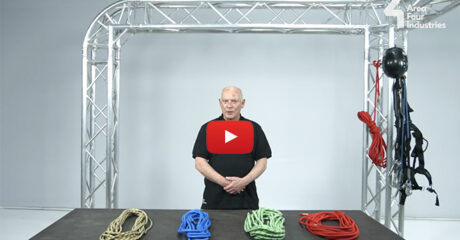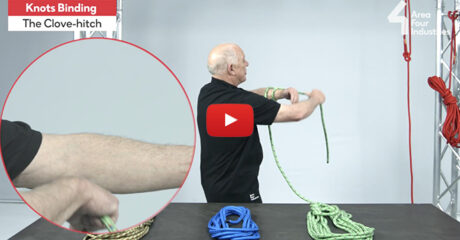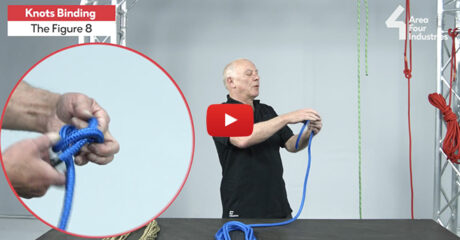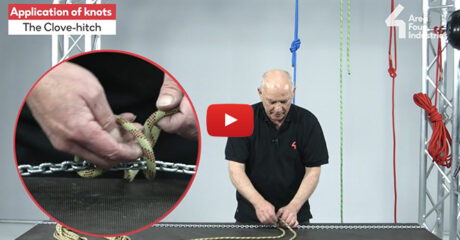
KNOXVILLE – Area Four has added to their list of instructional videos Listed below is information we thought you would find interesting.
More details from Area Four (www.areafourindustries.com):
At Area Four Industries there are many clever people who can answer your most technical questions. However, as Area Four Industries’ Eric Frederick Porter explains, no matter how experienced you might be, there are almost always gaps in any rigger’s skill set. In these four short videos, Eric looks at one of the most fundamental areas of any rigger’s expertise – the art of safely tying knots.
The Bowline
In the first video, Eric takes a look at the at the all-purpose ‘Bowline Knot.’ As Eric demonstrates, the Bowline is a fixed-length loop than cannot be tightened like a noose. For this reason, riggers favor the Bowline because no matter how hard you make it, or how heavily it is loaded, it is always easy to undo.

The Clove Hitch
In his second video, Eric takes us through the “elaborated spiral” of the Clove-hitch Knot.’ As Eric explains, riggers ordinarily leave a long enough tail to make a further simple knot that makes it easy to stabilize the Clove-hitch if the load is coming in or going away. One very useful application of the knot is to send an aluminum tube to people working upstairs. The knot can be very easily slid from the tube, which a more complicated knot would not allow, making it much safer for those working at height.

The Figure 8
The Figure 8 knot is an extremely effective ‘stopper knot’ used to prevent the end of a rope passing through a pulley. As Eric shows, the Figure 8 creates a more secure fixed length loop than the Bowline and weakens the rope less. This is achieved because the single load bearing line makes a turn around two thicknesses rather than one like the Bowline. However, there is a drawback. If the rope is old and has been laden many times, the Figure 8 is difficult and time-consuming to undo. If you are working at heights, it is generally preferable to use a factory-made termination.

Application of knots
The fourth video looks at the crucial area of the ‘Application of Knots.’ Eric explains how the Bowline knot is commonly used by the person upstairs sending his Bowline to the ground crew to tie a rigging assembly.
The Clove-hitch knot is often used to secure aluminum tubes (or plastic water bottles.) Another frequent application is to secure a hook to pull a heavy chain a long distance in the air. Just tying a knot into the hook below the pulley may not be sufficient to raise the pulley to the correct height. A solution is to tie the Clove-hitch a meter or so below the hook allowing the rigger to pull the hook into the required position while giving a certain length of slack chain to work with. A further application is sending soft goods upstairs.
A common application of the Figure 8 knot is hauling smaller items with the help of a carabiner or similar hook to lower heights. The ground crew will realize that the carabiner is to be used and should not undo the knot for you!




